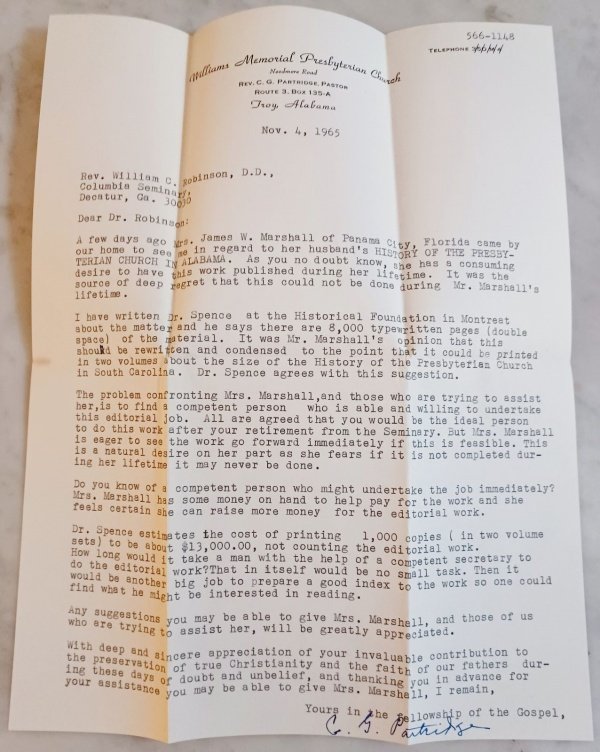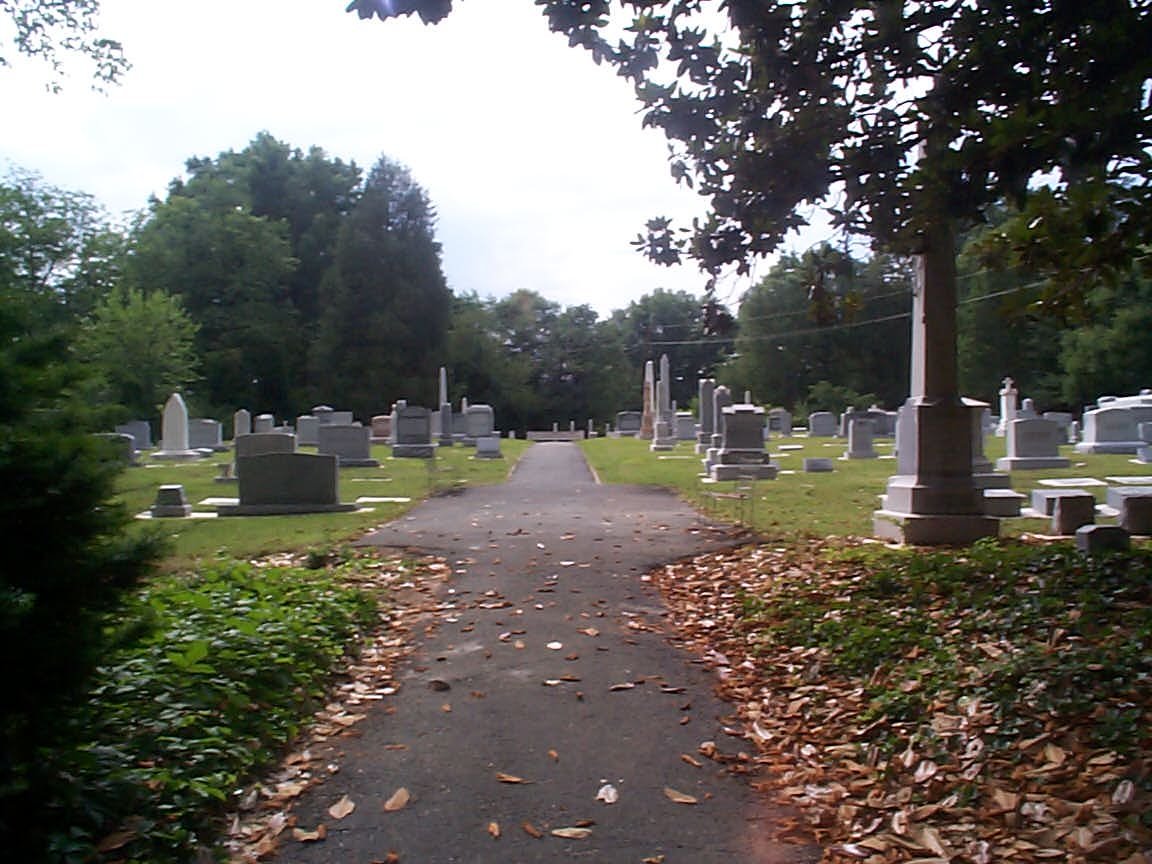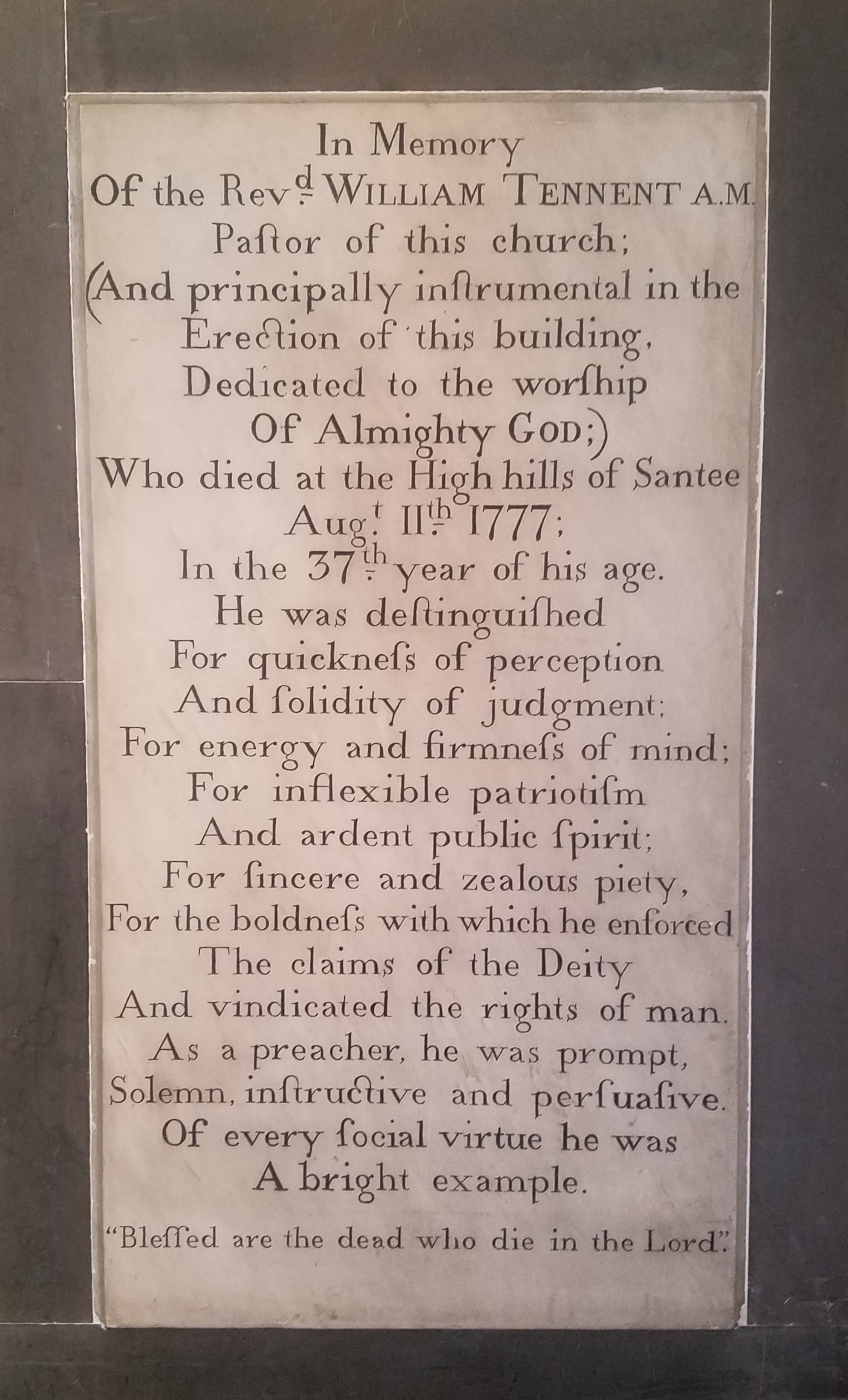If you have been in search of resources covering the history of Presbyterianism in a particular state or regional area within the United States, the list below (which is by no means comprehensive) may be of some assistance. Links are provided to works by LCP authors, but also note that much of the other literature referenced can be found on our secondary sources page as well. PCA Historical Center Director Wayne Sparkman’s research here was one of several helpful resources in compiling this list.
Alaska - Sheldon Jackson, Alaska, and Missions on the Pacific North Coast (1880); and The Presbyterian Church in Alaska: An Official Sketch of Its Rise and Progress, 1877-1884. With the Minutes of the First Meeting of the Presbytery of Alaska (1886); Aaron Ladner Lindsley, Sketches of an Excursion to Southern Alaska (1881); Thora McIlroy Mills, The Contributions of the Presbyterian Church to the Yukon During the Gold Rush, 1897-1910 (1977); Dianne Anderson O’Connell, The Yukon Presbyterian: An Unauthorized Biography (100 Years of Presbyterian Work in the Northern Parts of Alaska) (1999); Samuel Hall Young, Hall Young of Alaska, The “Mushing Parson”: An Autobiography (1927)
Arizona - Richard K. Smith and J. Melvin Nelson, Datelines and By-Lines : A Sketchbook of Presbyterian Beginnings and Growth in Arizona (1969)
Arkansas - Thomas H. Campbell, Arkansas Cumberland Presbyterian, 1812-1984: A People of Faith (1985); Charles Beatty Moore, The History of Presbyterianism in Arkansas, 1828-1902 (1902); James Wilson Moore, Presbyterianism in Arkansas (1858, 1905); H.L. Paisley, Centennial History of Presbyterianism (U.S.) in Arkansas (1954)
California - Jane Atkins-Vásquez, Hispanic Presbyterians in Southern California: One Hundred Years of Ministry (1988); Robert B. Coote & John S. Hadsell, San Francisco Theological Seminary: The Shaping of a Western School of the Church, 1871-1998 (1999); James Curry, History of the San Francisco Theological Seminary of the Presbyterian Church in the U.S.A. and Its Alumni Association (1907); Henry Collin Minton, Presbyterianism in California (1897); Greg Roth, Gold Rush Legacy: W.W. Brier, Pioneer Presbyterian Pastor (2005); Edward Arthur Wicher, The Presbyterian Church in California, 1849-1927 (1927); James L. Woods, California Pioneer Decade of 1849: The Presbyterian Church (1922)
Colorado - Andrew E. Murray, The Skyline Synod: Presbyterianism in Colorado and Utah (1971); John Bernard Schoolland, A Pioneer church: Being a Reverently Realistic Account of the First Presbyterian Church of Boulder, Colorado in it's Total Pioneer Origin, 1872-1972 (1972)
Connecticut - See below (esp. Blaikie on Presbyterianism in New England)
Delaware - John W. Christie, Presbyterianism in Delaware (1947); James H. Lappen, Presbyterians on Delmarva: The History of the New Castle Presbytery (1972); United States Army Command and General Staff College, Presbyterian Patriots: The Historical Context of the Shared History and Prevalent Ideologies of Delaware’s Ulster-Scots Who Took Up Arms in the American Revolution (2015); James Laird Vallandigham & Samuel Alexander Gayley, History of the Presbytery of New Castle, From Its Organization, March 13, 1717, to 1888 (1889)
District of Columbia - Benjamin Franklin Bittinger, The Rise, Progress and Influence of Presbyterianism in the District of Columbia (1895); Compilations, The Centennial of the Beginning of Presbyterianism in the City of Washington (1895); Frank E. Edgington, A History of the New York Avenue Presbyterian Church: One Hundred Fifty-Seven Years, 1803-1961 (1961); Dorothy Schaffter, The Presbyterian Congregation in George Town, 1780-1970 (1971); Dewey D. Wallace, Jr., Golden Wilson and Edith Holmes Synder, Capital Witness: A History of the New York Avenue Presbyterian Church in Washington, D.C. (2011)
Florida - James R. Bullock, Heritage and Hope: A Story of Presbyterians in Florida (1987); Karen Harvey, Florida’s First Presbyterians: A Celebration of 175 Years in St. Augustine, 1824-1999 (1998); Herbert A. Love, Opportunities, Responsibilities: The Work of the Presbyterian Church U.S. in Florida (1927); William Erskine McIlwain, The Early Planting of Presbyterianism in West Florida (1926)
Georgia - Lowry Axley, Holding the Torch Aloft: A Histor of the Independent Church of Savannah, Georgia (1958); Groves Harrison Cartledge, Historical Sketches: Presbyterian Churches and Early Settlers in Northeast Georgia (1960); Dwyn Mecklin Mounger, Who We Are As Presbyterians: Brief Scences From Our Past - A series of five vignettes to be presented at the fourteenth stated meeting of the Synod of the Southeast at St. Simons Presbyterian Church, St. Simons Island, Georgia, - September 16-17, 1986 in celebration of the 250th anniversary of Presbyterianism in Georgia (1986); James Stacy, A History of the Presbyterian Church in Georgia (1912); Franklin C. Talmage, The Story of the Presbytery of Atlanta (1960); Groves Harrison Cartledge, Historical Sketches: Presbyterian Churches and Early Settlers in Northeast Georgia (1960)
Hawaii - James McKinney Alexander, Mission Life in Hawaii: Memoir of Rev. William P. Alexander (1888)
Idaho - E. Paul Hovey, Presbyterian Yesterdays in Northern Idaho (1964)
Illinois - William Irvine Blair, The Presbyterian Synods of Illinois (1952); Leroy Jones Halsey, A History of the McCormick Theological Seminary of the Presbyterian Church (1893); James Gore King McClure, Sr., The Story of the Life and Work of the Presbyterian Seminary Chicago (1929); Augustus Theodore Norton, History of the Presbyterian Church, in the State of Illinois (1879); Andrew Stevenson, Chicago: Pre-Eminently a Presbyterian City (1907)
Indiana - Hanford Abram Edson, Contributions to the Early History of the Presbyterian Church in Indiana (1898); L.C. Rudolph, Hoosier Zion: The Presbyterians in Early Indiana (1963); Synod of Indiana, Presbyterianism in Indiana (1926)
Iowa - J.F. Hinkhouse, One Hundred Years of the Iowa Presbyterian Church (1932); Joseph Welton Hubbard, The Presbyterian Church in Iowa, 1837-1900 (1907); H. Gene Straatmeyer, The Synod of the West: A History of the Presbyterian German Synod of the West and Its Churches (2016); Beth Wunder, North Central Iowa Presbytery: Bicentennial History (1989)
Kansas - John Boynton Hill,The Presbytery of Kansas City and Its Predecessors (1901); Robert H. McFarland and A.J. McFarland, Papa Got It Right! (2016)
Kentucky - Robert Hamilton Bishop, An Outline of the History of the Church in the State of Kentucky (1824); Robert Davidson, History of the Presbyterian Church in the State of Kentucky; With a Preliminary Sketch of the Churches in the Valley of Virginia (1847); Moses Drury Hoge, Memorial Discourse on the Planting of Presbyterianism in Kentucky One Hundred Years Ago.(1883); Mack, George H. and Sanders, Robert Stuart, One Hundred Fifty Years of Kentucky Presbyterianism, 1802-1952 (1952); Louis B. Weeks, Kentucky Presbyterians (1983)
Louisiana - Benjamin Charles Bell, Presbyterianism in North Louisiana, Celebrating the Diamond Jubilee of Red River Presbytery (1930, 1988); Penrose St. Amant, A History of the Presbyterian Church in Louisiana (1961); Louis Voss, Presbyterianism in New Orleans and Adjacent Points (1931)
Maine - Jonathan Greenleaf, Sketches of the Ecclesiastical History of the State of Maine, From the Earliest Settlement to the Present Time (1821); see below (esp. Blaikie on Presbyterianism in New England)
Maryland - James E.P. Boulden, The Presbyterians of Baltimore: Their Churches and Historic Grave-Yards (1875); James William McIlvain, Early Presbyterianism in Maryland (1890)
Massachusetts - See below (esp. Blaikie on Presbyterianism in New England)
Michigan - Maurice F. Cole, Impact of the Civil War on the Presbyterian Church in Michigan (1965); John Comin & Harold F. Fredsell, History of the Presbyterian Church in Michigan (1950)
Minnesota - Maurice Dwight Edwards, History of the Synod of Minnesota, Presbyterian Church U.S.A. (1927); Edward Duffield Neill, Early Days of the Presbyterian Branch of the Holy Catholic Church, in the State of Minnesota (1873); John P. Williamson, ed., Historical Addresses Delivered at the Semi-Centennial Celebration of the Organization of Synod. October 14-19, 1908 (1908)
Mississippi - Cornelius Washington Grafton, Pioneer Presbyterians and Their Successors in Mississippi (1915); History of Presbyterianism in Mississippi (unpublished manuscript, n.d.); Frederick Roscoe Graves, The Presbyterian Work in Mississippi (1927); Thomas Luther Haman, Sr., Beginnings of Presbyterianism in Mississippi (1909); Robert Milton Winter, Shadow of a Mighty Rock: A Social and Cultural History of Presbyterianism in Marshall County, Mississippi (1997); Outposts of Zion: A History of Mississippi Presbyterians in the Nineteenth Century, (2014); and Citadels of Zion: A History of Mississippi Presbyterians, Vols. 1 & 2 (2016)
Missouri - Joseph M. Garrison,The Missouri Presbytery, 1817-1937 (1937); Timothy Hill, The Early History of the Presbyterian Church in Missouri (1861); Historical Outlines of the Presbyterian Church in Missouri: A Discourse (1871); Eugene Edward Stringfield, Presbyterianism in the Ozarks A History of the Work of the Various Branches of the Presbyterian Church in Southwest Missouri 1834-1907 (1909); Kenneth R. Locke and J. Joseph Trower,“Like Prairie Wildfire…Presbyterianism Spreads Westward.” A Story of the Presbytery of Missouri Union, 180 Years of Mission, 1817 to 1997 (1997)
Montana - George Edwards, The Pioneer Work of the Presbyterian Church in Montana (1907); Patricia M. McKinney, Presbyterianism in Montana: Its First Hundred Years (1972)
Nebraska - Charles Arthur Hawley, Fifty Years on the Nebraska Frontier: The History of the Presbyterian Theological Seminary in Omaha, Nebraska (2012); Julius F. Schwarz, History of The Presbyterian Church in Nebraska (1924)
Nevada - Zelvin D. Lowman, A Voice in the Desert: A History of First Presbyterian Church, Las Vegas, Nevada (1992)
New Hampshire - Samuel Lankton Gerould, The Congregational and Presbyterian Churches and Ministers of New Hampshire connected with the General Association: A Continuation of the compilation of Rev. Henry A. Hazen, issued in 1875, bringing the record down to 1900 (1900); see also below (esp. Blaikie on Presbyterianism in New England)
New Jersey - Allen H. Brown, Historical Sketch of the Synod of New Jersey For the Quarter of a Century, From 1861 to 1886 (1888) and An Address on the Presbyterian Church in South Jersey, Its Origin and Progress (1888); David B. Calhoun, Princeton Seminary (2 vols., 1996); Centennial, Presbytery of Newton: An Adjourned Meeting, in the First Presbyterian Church, Washington, N.J.: The Historical Narrative, Histories of the Churches and Other Data (1917); William Armstrong Dod, History of the College of New Jersey (1844); George H. Ingram, “The Erection of the Presbytery of New Brunswick, Together With Some Account of the Beginnings of Organized Presbyterianism in the American Colonies” in Journal of Presbyterian History, Vol. 6, No.6 (June 1912) [and a series of articles titled “History of the Presbytery of New Brunswick” appearing in the Journal of Presbyterian History from 1912 to 1919]; Theron Hewitt, One Hundredth Anniversary of the Organization of The Presbytery of West Jersey, November 5, 1839 - November 5, 1939, in the First Presbyterian Church, Bridgeton, New Jersey, November 6, 1939 (1939); John Maclean, Jr., History of the College of New Jersey, Vol.s 1&2 (1877); Samuel Miller, A Brief History of the Theological Seminary of the Presbyterian Church at Princeton, New Jersey, Together With Its Constitution, By-Laws, &c (1837, 1838); Joseph Gaston Symmes, Historical Sketch of Monmouth Presbytery and Its Churches (1877)
New Mexico - Ruth Kerns Barber, Sowers Went Forth: The Story of Presbyterian Missions in New Mexico and Southern Colorado (1981); Dale B. Gerdeman, Presbyterian Missionaries in Rural Northern New Mexico: Serving the Lord on the New Mexico Frontier (1999)
New York - Samuel Davies Alexander, The Presbytery of New York, 1738 to 1888 (1887); Dorothy Ganfield Fowler, A City Church: The First Presbyterian Church in the City of New York, 1716-1976 (1981); Philemon Halstead Fowler, Historical Sketch of Presbyterianism Within the Bounds of the Synod of Central New York (1877); Joyce D. Goodfriend, “A New Look at Presbyterian Origins in New York City,” American Presbyterians, Vol. 62 (1989), pp. 199-207; Robert Handy, A History of Union Theological Seminary in New York (2011); Robert Hastings Nichols, Presbyterianism in New York State: A History of the Synod and Its Predecessors (1963); George Nicholson, The Story of Long Island Presbytery and Churches (1956); Theodore Fiske Savage, The Presbyterian Church in New York City (1949); Thomas S. Wood, History of the Presbytery of New York (1976)
North Carolina - Walter Conser & Robert Cain, Presbyterians in North Carolina: Race, Politics, and Religious Identity in Historical Perspective (2012); David Irwin Craig, A History of the Development of the Presbyterian Church in North Carolina, and of Synodical Home Missions (1907); Harold J. Dudley, History of the Synod of N.C., Presbyterian Church in the U.S. (1963, also titled Brief History of the Presbyterian Church in North Carolina); William Henry Foote, Sketches of North Carolina (1846); Neill Roderick McGeachy, Confronted by Challenge: A History of the Presbytery of Concord (1985); Jethro Rumple, The History of Presbyterianism in North Carolina (1966); Charles Alfonso Smith, Presbyterians in Educational Work in North Carolina Since 1813 (1913); Robert Hamlin Stone, A History of Orange Presbytery, 1770-1970 (1970)
North Dakota - William C. Hunter, Presbyterianism in North Dakota (1959); C.R. McCurdy, Establishment of Presbyterianism in North Dakota (1990); Marian E. McKechnie, Spiritual Pioneering: A History of the Synod of North Dakota, Presbyterian Church, USA, 1885-1954 (1955); Stanley Norman Murray, Presbyterians on the Northern Plains: A History (2002); James P. Schell, A History of the Early Presbyterian Church in North Dakota (1913); Linda Warfel Slaughter, Leaves From Northwestern History (1905)
Ohio - William Wilson McKinney, The Presbyterian Valley: 200 Years of Presbyterianism in the Upper Ohio Valley (1958); Rick Nutt, Contending for the Faith: The First Two Centuries of the Presbyterian Church in the Cincinnati Area (1991); E.B. Welsh, Buckeye Presbyterianism: An Account of the Seven Presbyterian Denominations With Their Synods Within the State of Ohio (1968)
Oklahoma - Michael Cassity & Danny Goble, Divided Hearts: The Presbyterian Journey Through Oklahoma History (2009); G.T. Ralls, Oklahoma Trails: A History of the Work of the Synod of Oklahoma of the Presbyterian Church in the United States (1927)
Oregon - Clifford Merrill Drury, Marcus and Narcissa Whitman and the Opening of Old Oregon, Vols. 1&2 (1986); Julie Joy Jeffrey, Converting the West: A Biography of Narcissa Whitman (1994); Nard Jones, The Great Command: The Story of Marcus & Narcissa Whitman and the Oregon Country Pioneers (1959)
Pennsylvania - Daniel M. Bennett, Life and Work of Rev. John McMillan: Pioneer, Preacher, Educator, Patriot of Western Pennsylvania (1935); Centenary Memorial of the Planting and Growth of Presbyterianism in Western Pennsylvania and Parts Adjacent (1876); Samuel John Mills Eaton, History of the Presbytery of Erie (1868); Peter E. Gilmore, Irish Presbyterians and the Shaping of Western Pennsylvania, 1770-1830 (2018); Dwight Ray Guthrie, John McMillan: The Apostle of Presbyterianism in the West, 1752-1833 (1952); Guy Solliard Klett, Presbyterians in Colonial Pennsylvania (1937); Donald Roth Kocher, The Mother of Us All: First Presbyterian Church in Philadelphia, 1698-1998 (1998); William Wilson McKinney, Early Pittsburgh Presbyterianism: Tracing the Development of the Presbyterian church, United States of America, in Pittsburgh, Pennsylvania from 1758-1839 (1938); Thomas Murphy, The Presbytery of the Log College; or, The Cradle of the Presbyterian Church in America (1889); Robert Mayne Patterson, Historical Sketch of the Synod of Philadelphia (1876); Reformed Presbyterian Theological Seminary, To God Be the Glory: Celebrating 200 Years (2008); Joseph Smith, Old Redstone; or, Historical Sketches of Western Presbyterianism, Its Early Ministers, Its Perilous Times, and Its First Records (1854); James Arthur Walther, Ever a Frontier: The Bicentennial History of the Pittsburgh Theological Seminary (1994)
Rhode Island - See below (esp. Blaikie on Presbyterianism in New England)
South Carolina - David B. Calhoun, Our Southern Zion: Old Columbia Seminary (1828-1927) (2012); Joanne Calhoun, The Circular Congregational Church: Three Centuries of Charleston History (2008); Erskine Clarke, Our Southern Zion: A History of Calvinism in the South Carolina Low Country, 1690-1990 (1996); George Howe, History of the Presbyterian Church in South Carolina, Vols. 1&2 (1870); Nancy Snell Griffith & Charles E. Raynal, Presbyterians in South Carolina, 1925-1985 (2016); F.D. Jones and W.H. Mills, History of The Presbyterian Church in South Carolina (1926); Edward Guerrant Lilly, Beyond the Burning Bush: First (Scots) Presbyterian Church, Charleston, S.C. (1986); Caroline T. Moore, The Reverend Archibald Stobo: Brief Account of Archibald Stobo's Immigration from Scotland in 1700 and His Ministerial Labors in Charleston, S.C., and Vicinity, Including the Founding of Presbyterian churches at James Island, Willtown Bluff, Pon Pon, Edisto Island, and Cainhoy (1969)
South Dakota - Bruce David Forbes, “Presbyterian Beginnings in South Dakota, 1840-1900” (South Dakota State Historical Society, 1977); Dakota Presbytery Council, The First 50 Years: Dakota Presbytery to 1890 (1892); Stanley Norman Murray, Presbyterians on the Northern Plains: A History (2002); Stephen Return Riggs, Sketches of the Dakota Mission (1873)
Tennessee - John Edmiston Alexander, A Brief History of the Synod of Tennessee, from 1817 to 1887 (1890); Thomas C. Barr, et. al., eds., The Story of the Presbyteries of Nashville and Columbia: From Early Settlement to 1972 (1976); Charles Edward Diehl, The Story of a Vineyard: The Work of the Presbyterian Church U.S. in the Synod of Tennessee (1927); Jovanna Emerson & Mary Ann Van Osdell, Historic Presbyterian Churches of Tennessee (2006); James Isaac Vance, Pioneer Presbyterianism in Tennessee (1898)
Texas - Thomas Chavez, Jr., Texas Mexican Presbyterians (1980); William E. Lytch, The Cradle of Texas Presbyterianism: A History of Memorial Presbyterian Church, San Augustine, Texas (1993); William McLeod, Presbyterian Expansion in the Synod of Texas of the PCUS (1927); Robert Finney Miller, Early Presbyterianism in Texas as Seen by Rev. James Weston Miller, D.D. (1915); George H. Paschal, Jr. and Judith A. Benner, One Hundred Years of Challenge and Change: A History of the Synod of Texas of the United Presbyterian Church in the U.S.A. (1968); William Stuart Red, A History of the Presbyterian Church in Texas (1936); Presbytery of Brazos, Echoes From the Past: Brief Historical Sketches Connected With Presbyterianism in the South and Its God-Given Work in the World (1936); Levi Tenney, History of the Presbytery of Central Texas (1895)
Utah - Paul Jesse Baird, Presbyterian Pioneers in Utah (1996) and The Mystery of Ministry in the Great Basin: William Mitchell Paden en route to Utah, 1897 (1976); Frederick Burton, Presbyterians In Zion: History of the Presbyterian Church (U.S.A.) in Utah (2010); George K. Davies, A History of the Presbyterian Church in Utah (1942, 1945); Theodore D. and Marian E. Martin, and Emil Nyman, Presbyterian Work in Utah, 1869- 1969 (1970); Emma Jane McVicker, The History of Presbyterian Work in Utah (1893); Andrew E. Murray, The Skyline Synod: Presbyterianism in Colorado and Utah (1971); Albert Walton Roth, A Century of Service in Utah, 1869-1969 (1969)
Vermont - See below (esp. Blaikie on Presbyterianism in New England)
Virginia - Patricia Alridge, ed., Virginia Presbyterians in American Life: Hanover Presbytery (1755-1980) (1982); Henry M. Brown & William M.E. Rachal, Yesterday and Tomorrow in the Synod of Virginia (1962); Thomas E. Buckley, Church and State in Revolutionary Virginia, 1776-1787 (1977); William Henry Foote, Sketches of Virginia (First and Second Series) (1850, 1855); Wesley M. Gewehr, The Great Awakening in Virginia, 1740-1790 (2011); James Robert Graham, The Planting of the Presbyterian Church in Northern Virginia (1904); Joseph C. Harrod, Theology and Spirituality in the Works of Samuel Davies (2019); Thomas Cary Johnson, Virginia Presbyterianism and Religious Liberty (1909); Edward Mack, The Early Virginia Puritans: — Founders of American Presbyterianism (1901), Our Presbyterian Heritage in Eastern Virginia (1924); Dewey Roberts, Samuel Davies: Apostle to Virginia (2017); William Henry Tappey Squires, The Presbyterian Church in the Colony of Virginia, 1562-1788 (1938); William B. Sweetser, Jr., A Copious Fountain: A History of Union Presbyterian Seminary, 1812-2012 (2016); Howard McKnight Wilson, The Tinkling Spring, Headwater of Freedom: A Study of the Church and Her People, 1732-1952 (1954), The Lexington Presbytery Heritage: The Presbytery of Lexington and its churches in the Synod of Virginia, Presbyterian Church in the United States (1971), Presbyterian Beginnings in Lower Tidewater Virginia (1973)
Washington - Robert Boyd, History of the Synod of Washington, of the Presbyterian Church in the United States of America, 1835-1909 (1910); Robert L. Welsh, The Presbytery of Seattle, 1858-2005: The “Dream” of a Presbyterian Colony in the West (2006)
West Virginia - Dennis Eldon Bills, Presbyterianism in West Virginia: A History (2019); Lloyd Courtney, The Church of the Western Waters: An History of Greenbrier Presbytery and Its Churches (1940); Dorsey Daniel Ellis, Look Unto the Rock: A History of the Presbyterian Church, U.S. in West Virginia, 1719-1974 (1982); Gill I. Wilson, A Sketch of Presbyterianism in West Virginia (1915) and The Story of Presbyterianism in West Virginia (1958); The Work Projects Administration, Inventory of the Church Archives of West Virginia: The Presbyterian Churches (1941)
Wisconsin - William Fiske Brown, Past Made Present: The First Fifty Years of the First Presbyterian Church and Congregation of Beloit, Wisconsin; and A History of Presbyterianism in Our State Up to the Year 1900 (1900); Edward C. Wicklein, A Wisconsin History of the Associate Presbyterian Church of North America, Associate Reformed Presbyterian Church of the West (Later of America), Reformed Presbyterian Church of North America, Reformed Presbyterian Church, General Synod, United Presbyterian Church of North America, With Historical Sketches of Each Congregation, 1840-1958 (1974)
Wyoming - Art Randall, History: The Presbytery of Wyoming of the Synod of the Rocky Mountains, 1869-1988 (1988)
There are also a number of helpful regional studies of Presbyterianism in America:
Note: This post was updated on March 28, 2022.















